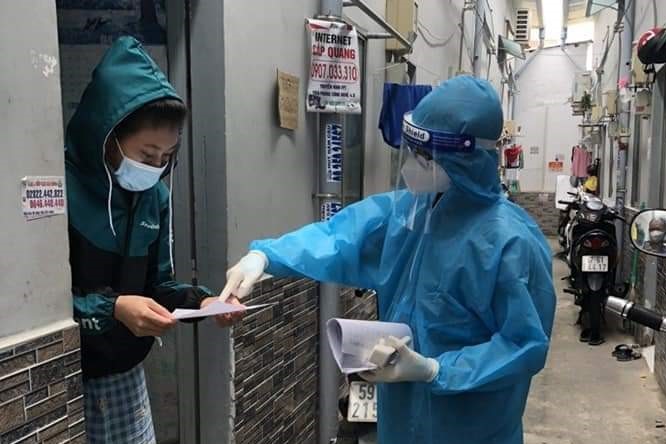AmericaThe Bitcoin mining industry makes many people millionaires, but many communities, like the city of Plattsburgh, have to make a trade-off.
Bitcoin mining began to explode in 2016 when the company Bitmain launched specialized machines. Miners look for cheap electricity around the world to run. The Bitcoin network operates on a proof-of-work (PoW) basis, so it requires a lot of energy. Each transaction on the system consumes 1,173 kilowatts of electricity, more than the average US household consumes in a month. “The arms race between the miners started almost overnight,” said Colin Read, a professor of economics at New York University.
The city of Plattsburgh in New York state is noticed by miners because it has a leading source of cheap electricity powered by hydroelectric power managed by the Niagara Energy Authority.

Bitcoin mining rigs at Coinmint’s facility in Plattsburgh. Image: Technology Review.
Suffering from power-hungry machines
Plattsburgh officials say they receive applications to start a cryptocurrency mine weekly.
Among them, cryptocurrency mining company Coinmint leases a Family Dollar store in Plattsburgh, deploys floor-to-ceiling servers, and operates them 24/7. When the company wanted to expand into a nearby mall, Plattsburgh Lighting Department manager Bill Treacy said it had to invest in $140,000 worth of infrastructure itself. He was surprised that Coinmint did not object to paying the sum, and then consumed up to 10 megawatts, equivalent to the amount of 4,000 local households.
Many other miners quickly followed in Coinmint’s footsteps, with some even suggesting using up to 5 gigawatts, showing how energy-hungry miners are. However, Treacy had to decline because “that number is equivalent to a quarter of the consumption of the entire state of New York in a day”.
In January 2018, a sudden cold swept through Plattsburgh and people made full use of the heaters. The city quickly exceeded the threshold for hydroelectricity consumption and had to buy energy from elsewhere at a higher price. City building inspector Joe McMahon says his family’s energy bill increases by $30 to $40 a month. “People felt there was a problem but didn’t know where it started,” he recalls.
As the long winter ended, the surrounding areas discovered that the Bitcoin mines produced huge amounts of heat and needed constant ventilation to prevent overheating. “The exhaust fans make a high-frequency and continuous hiss, like a small plane about to take off. The discomfort is not only from the noise level but also because of its pitch. The fan noise is annoying, like the toothache doesn’t go away,” McMahon said.
Carla Brancato, a resident of the river opposite the Zafram cryptocurrency mining company, said her house constantly vibrates because of the noise, like someone running a vacuum cleaner upstairs.
Meanwhile, Elizabeth Gibss, the city councilor, is shocked to visit a Bitcoin mining pool. “I was surprised by the heat, the heat and the noise,” she said, adding that the warehouses contain hundreds of servers connected by cables, while doors and windows are left open to let in cool air. .

Coinmint Bitcoin Mining Facility in Plattsburgh. Image: Technology Review.
Between 2016 and 2018, cryptocurrency mining in New York State added $165 million in annual electricity bills for small businesses and $79 million for individuals. “As an investor, you see the value of cryptocurrencies. But for people living in the community like me, we don’t see that.” McMahon said.
Economist Matteo Benetton, a professor at the Hass School of Business at the University of California at Berkeley, thinks that mining can cause a local recession. Where there is a fixed supply of electricity, this will drain the network’s reserves and lead to power shortages, forcing regulators to regulate or even causing widespread blackouts. With a region rich in energy, mining could take the place of occupations that could provide more jobs.
“There are benefits to the individual, but society has to pay the price,” Mr. Benetton said.
Tightening measures
Faced with the above situation, from 2017, the New York Public Service Commission added regulations requiring consumers of a lot of energy to pay higher fees, as well as forcing cryptocurrency miners to seal off their infrastructure. specific floors and pay a sum to ensure they are able to pay their energy bills. Coinmint has to pay a guarantee of more than one million USD, based on electricity bills for the last two months.
Plattsburgh is still accepting applications to open new mines, but stricter regulations make it less attractive to miners. Bitcoin mining spiked in the nearby town of Massena, where Coinmint signed a long-term lease at a decommissioned aluminum plant.
Benetton argues that the large economic benefits encourage the mine to operate as many machines as possible, but needs to increase transparency in energy consumption. The US government does not track electricity consumption from cryptocurrency mining networks, but US Securities and Exchange Commission (SEC) Chairman Gary Gensler admits there are regulatory loopholes.
Meanwhile, Professor Read believes that the bans only cause miners to move the threat to new locations. For example, when China banned Bitcoin mining to meet its emissions target in 2021, activity shifted to places like Kazakhstan, where electricity is mainly coal-fired.
Even as the industry invests in renewable energy, its massive consumption makes it a big contributor to carbon emissions. Professor Read rejected promises that increased mining efficiency and heavy investment in green energy would solve the problem. He said the energy consumption of the cryptocurrency network will increase by 30% by the end of the 2020s, generating an additional 32.5 million tons of CO2 per year.
“As long as the price of Bitcoin goes up, so does the reward for mining, so does energy consumption. More than 32 million tons of CO2 a year will make the climate crisis worse, whether it comes from New York or Kazakhstan. Everyone has to suffer the consequences,” he said.
Diep Anh (according to Technology Review)
at Blogtuan.info – Source: vnexpress.net – Read the original article here



